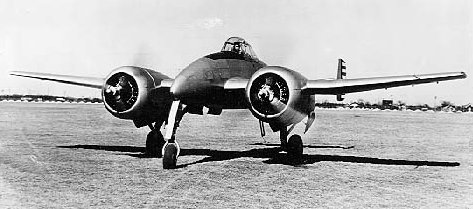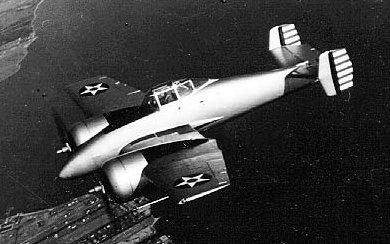Grumman XP-50 Skyrocket




(Photos courtesy of the U.S. Air Force. History info courtesy of "The Planes and Pilots of World War II" website)
For more data on this aircraft, click
here for Joe Baugher's
webpage.
USAF archives on this aircraft, click
here.
Additional information on this aircraft
can be found at Wikipedia
here.
(updated February 2009)
Grumman XP-50 Skyrocket
Type: Fighter Crew: 1, Pilot Armament: 4 .50 Fifty caliber machine guns, 1 20mm cannon, 165 lbs. bombs Specifications: Length: 31' 11" Height: 12' Wingspan: 42' Wing area: unknown Empty Weight: 8,300 lb Loaded Weight: 10,600 lb Propulsion: No. of Engines: 2 Powerplant: Wright R-1820-67/69 radial Horsepower: 1200 hp each Performance: Range: 1,250 miles Cruise Speed: unknown Max Speed: 425 mph Ceiling: 40,000 ft (Since the Xp-50 did not complete its flight testing, these performances are estimates.)XP-50 data provided by Josh Henderson of Vienna, VA.
If this page does not have a navigational frame on the left, click HERE to see the rest of the website.